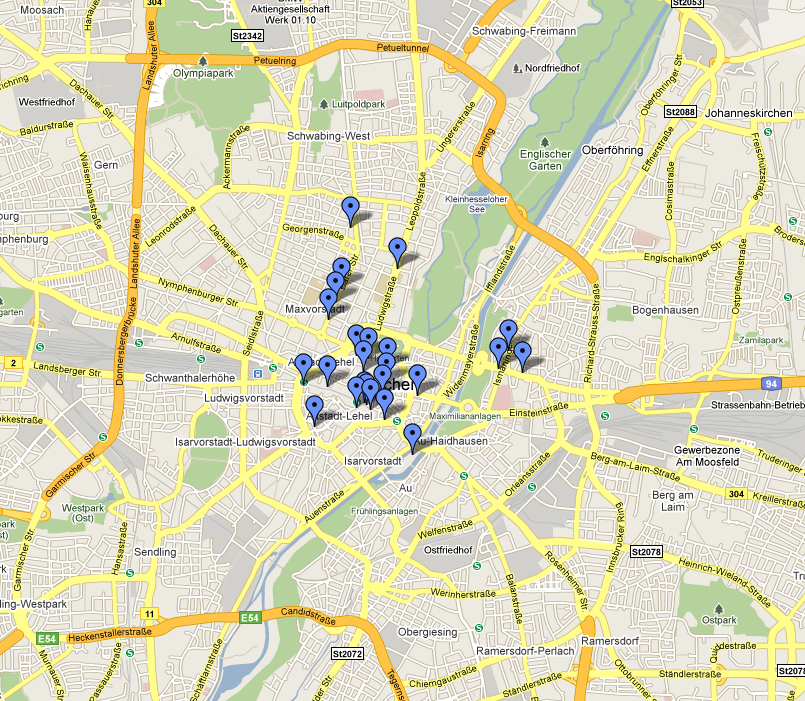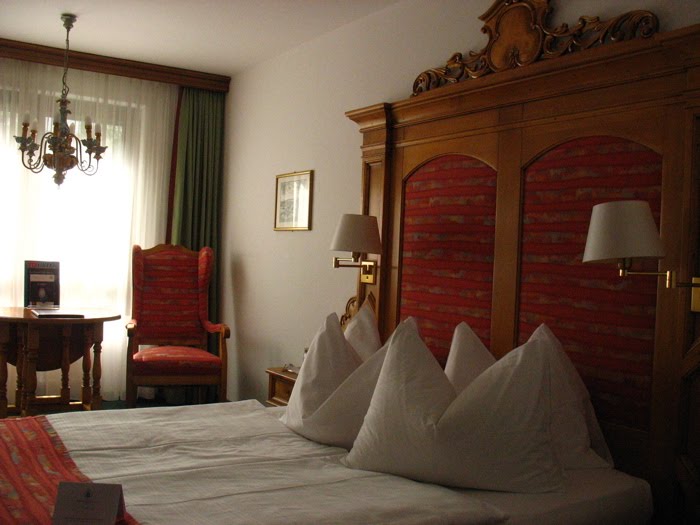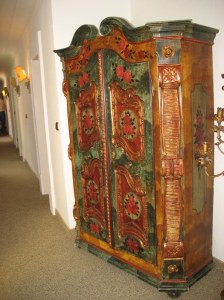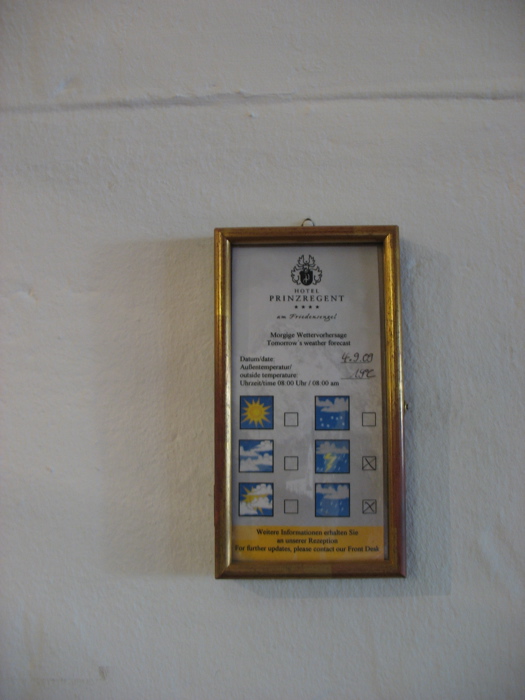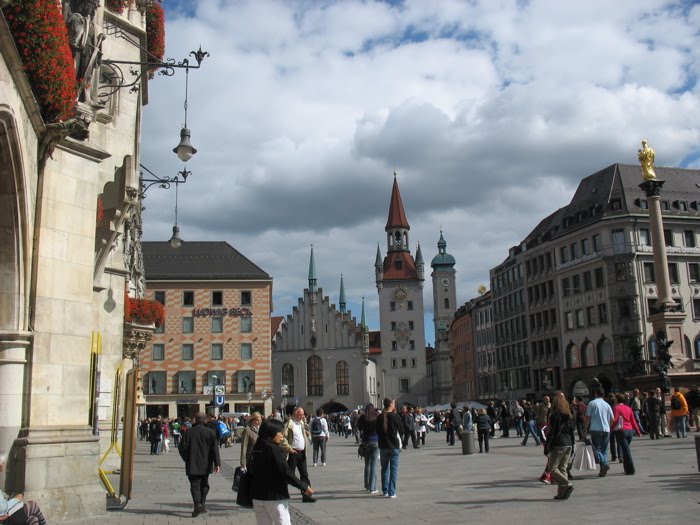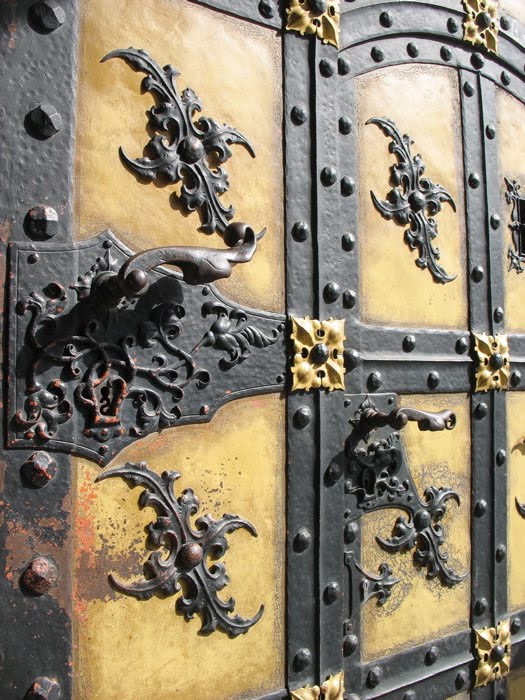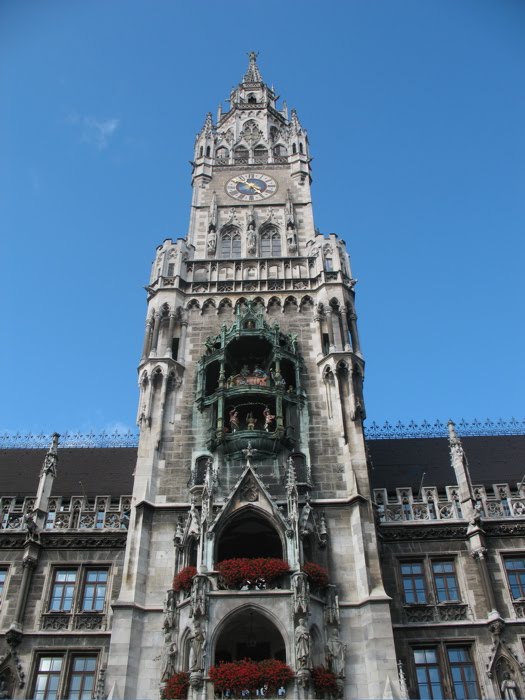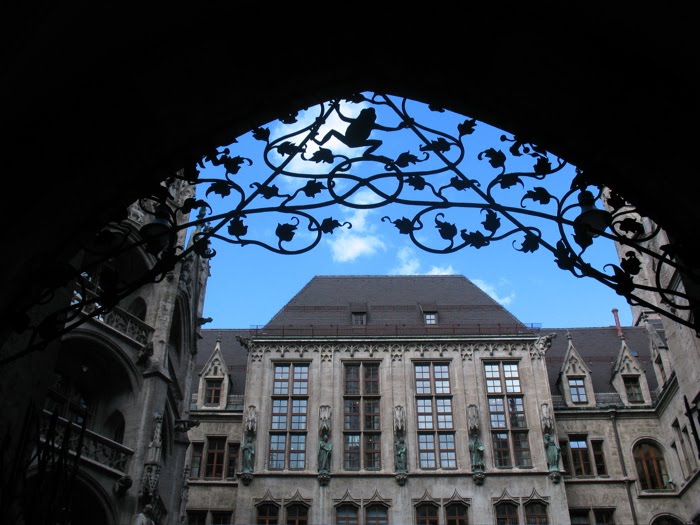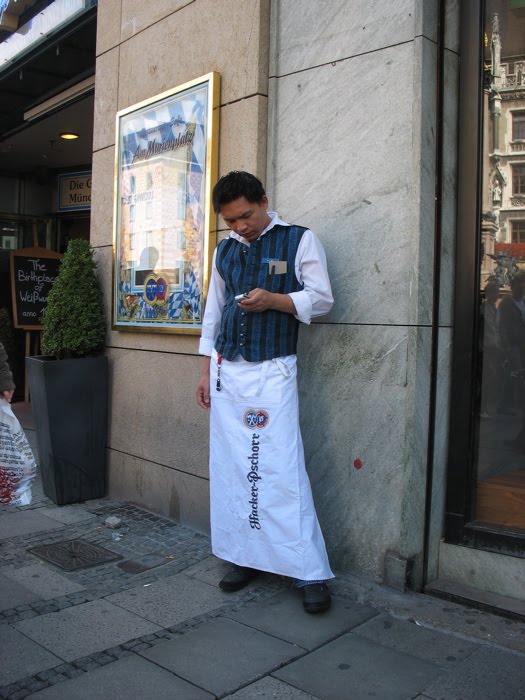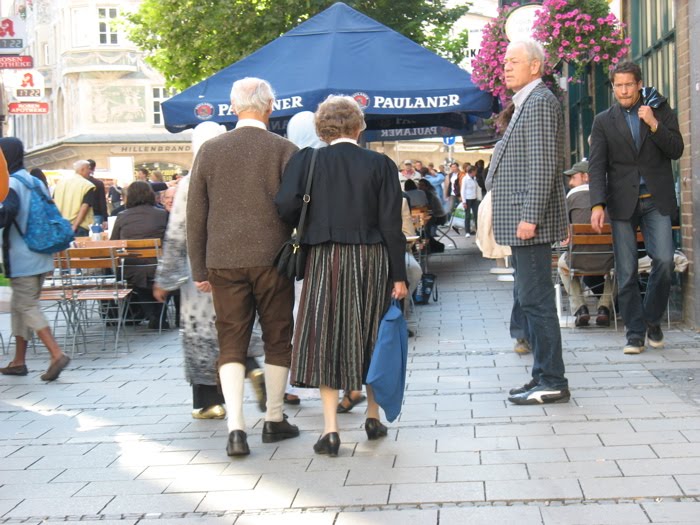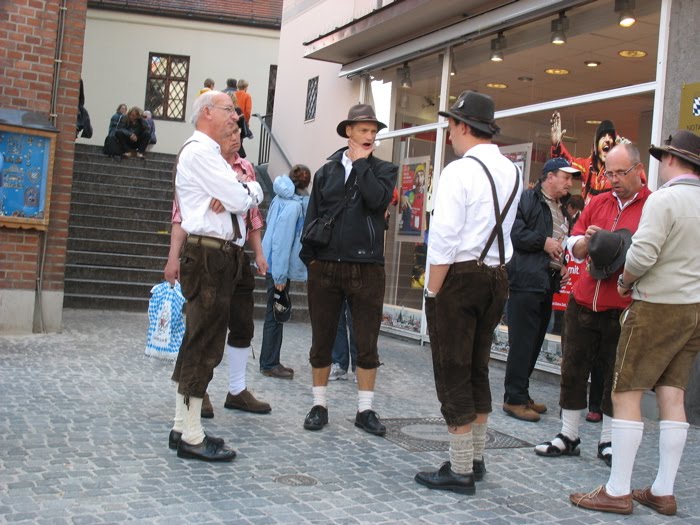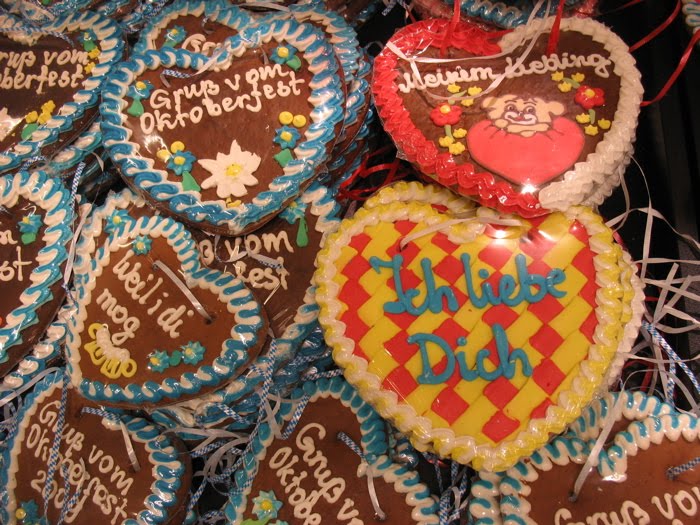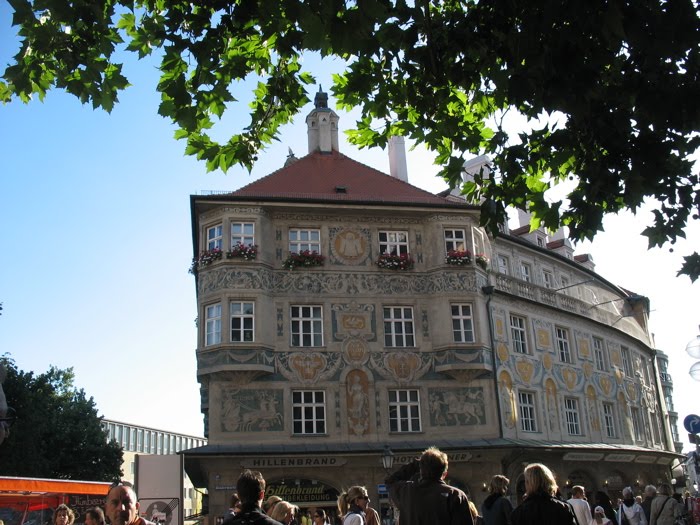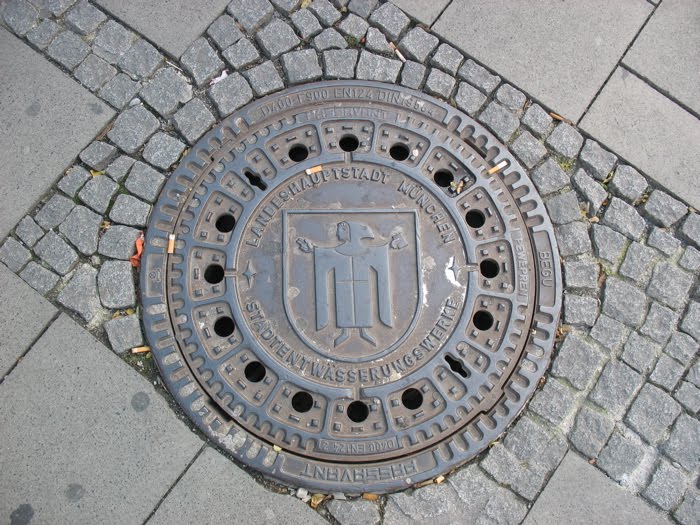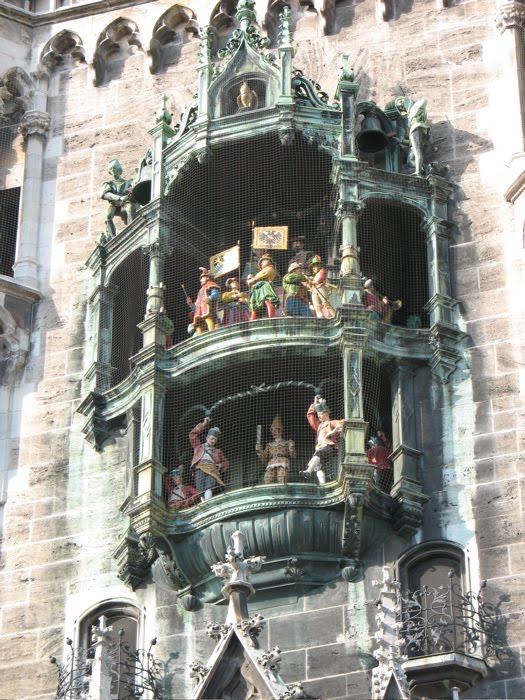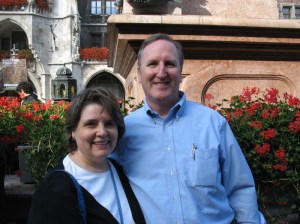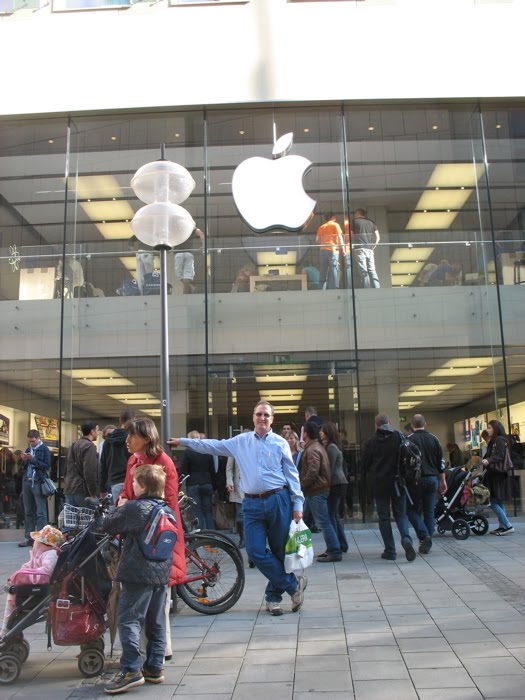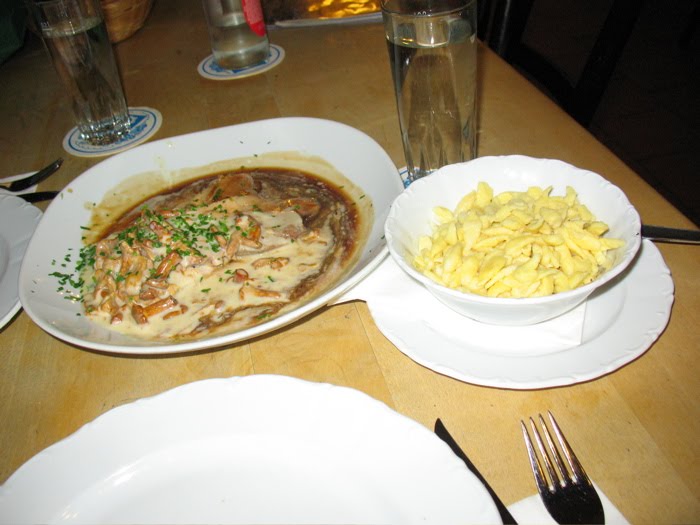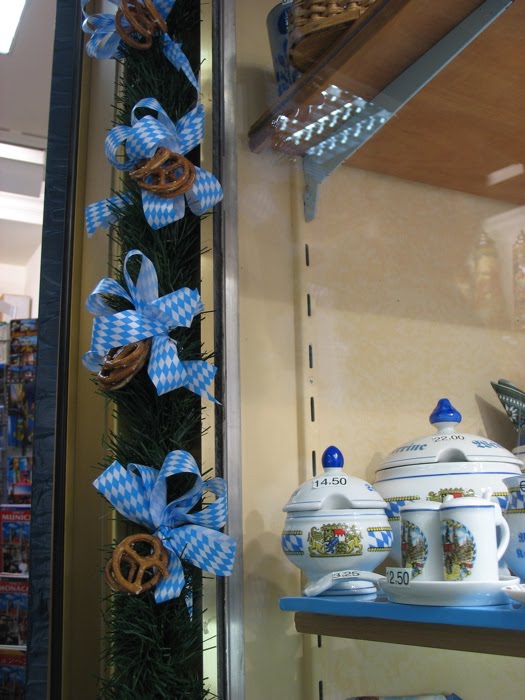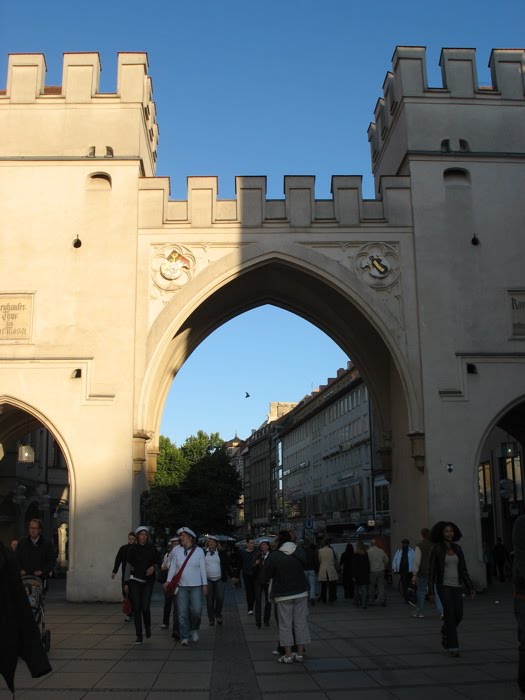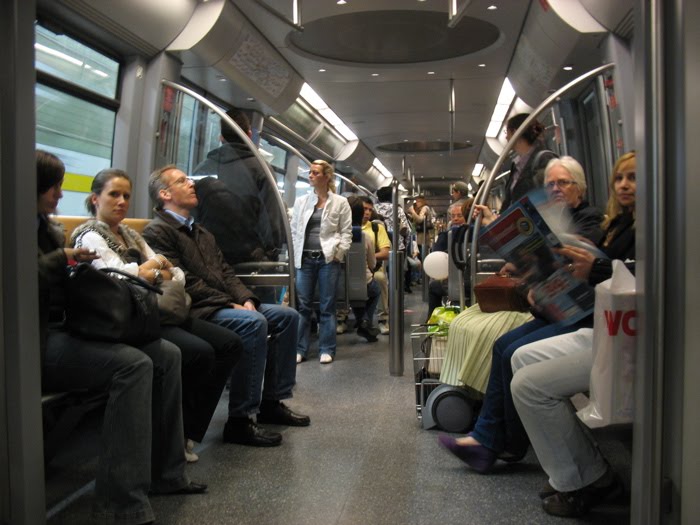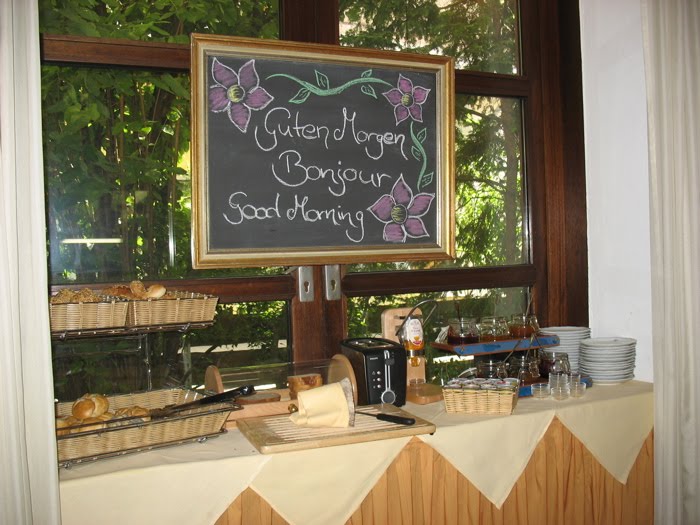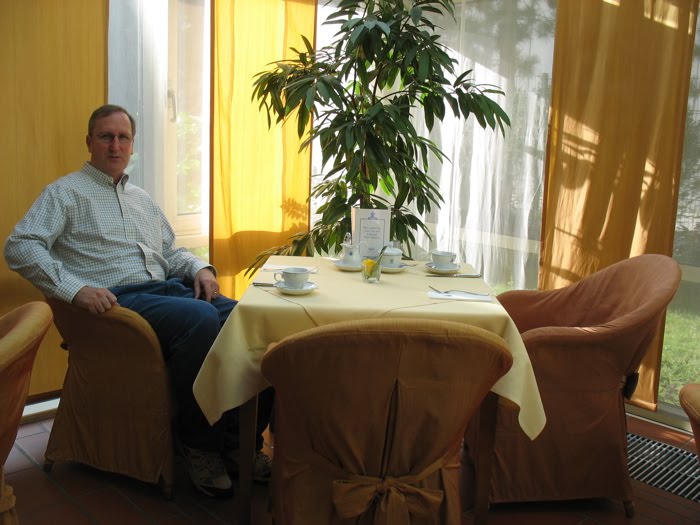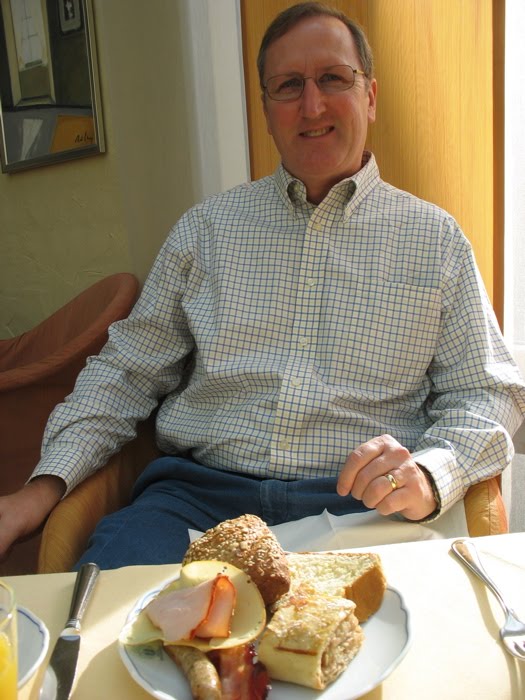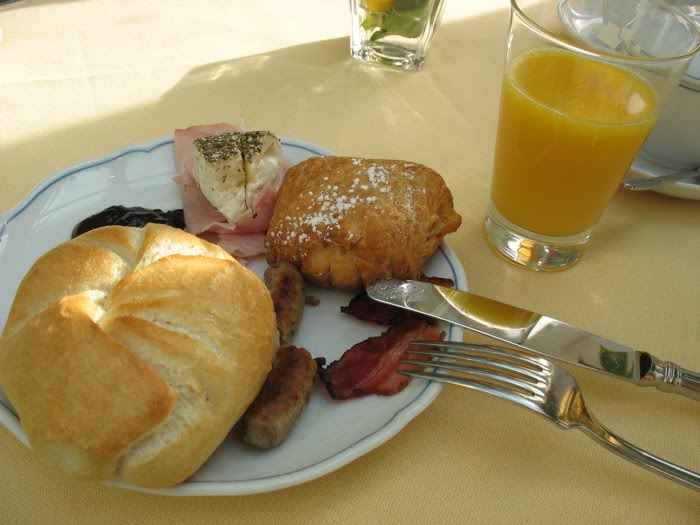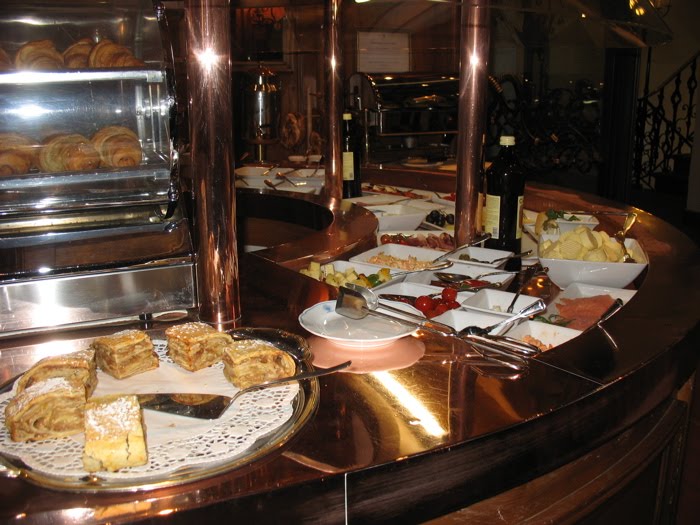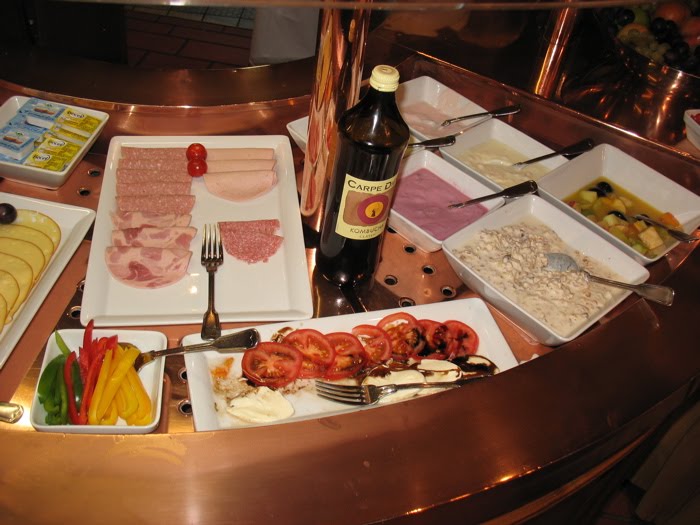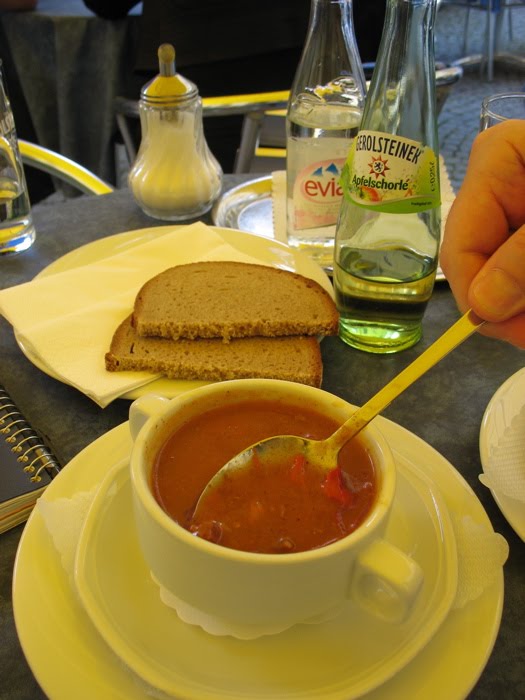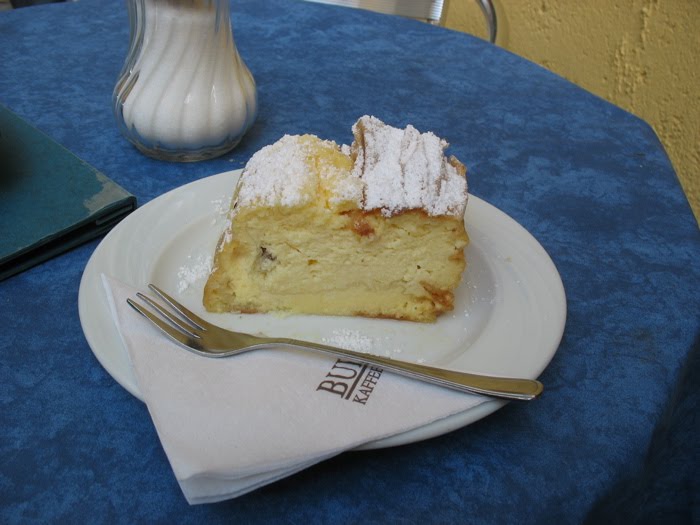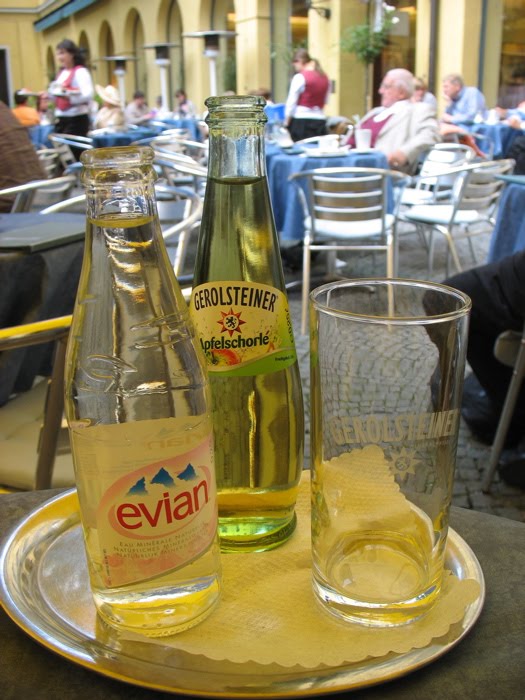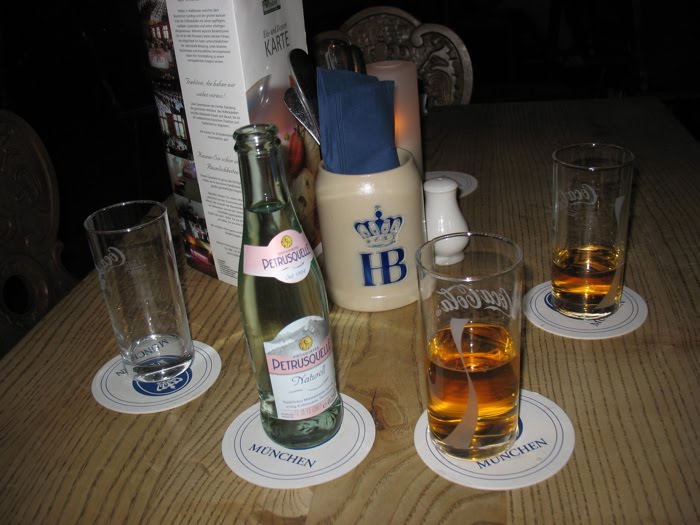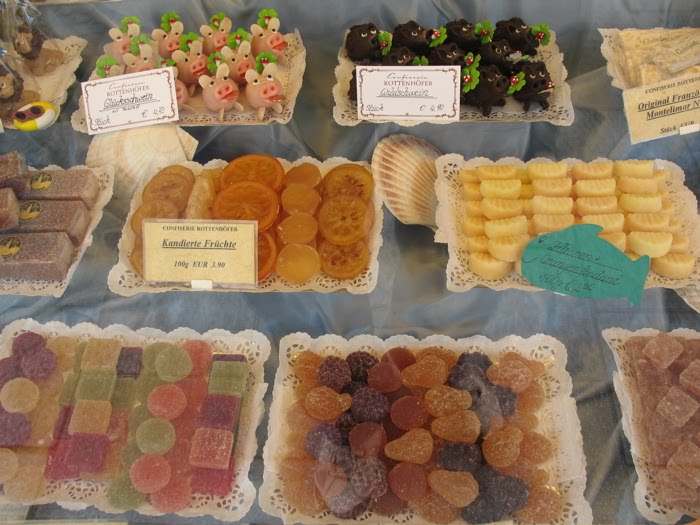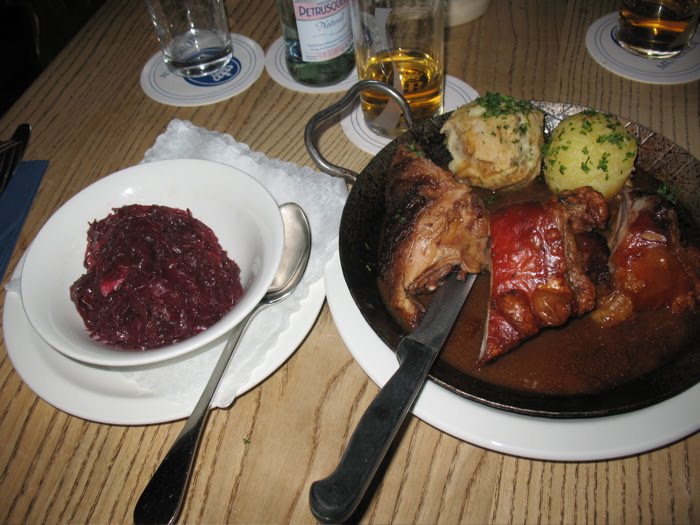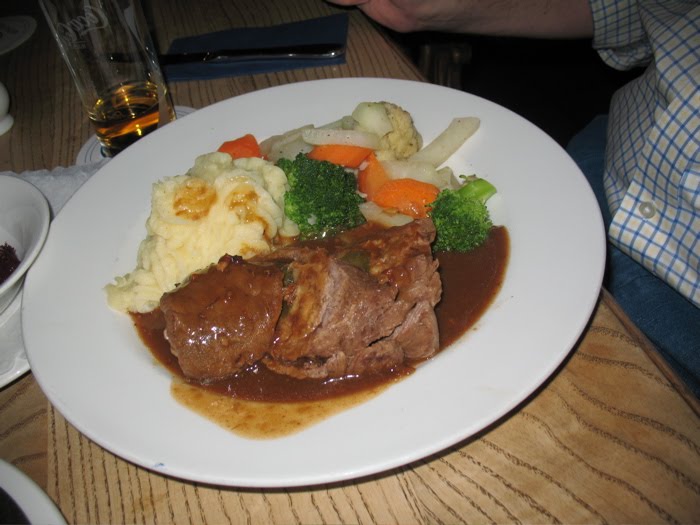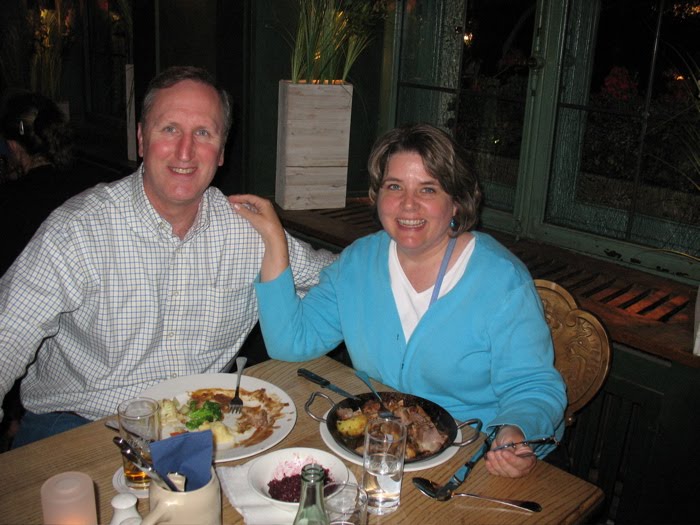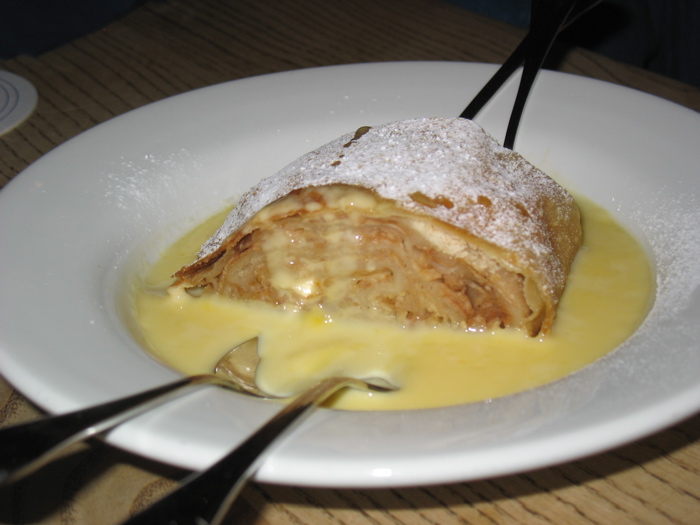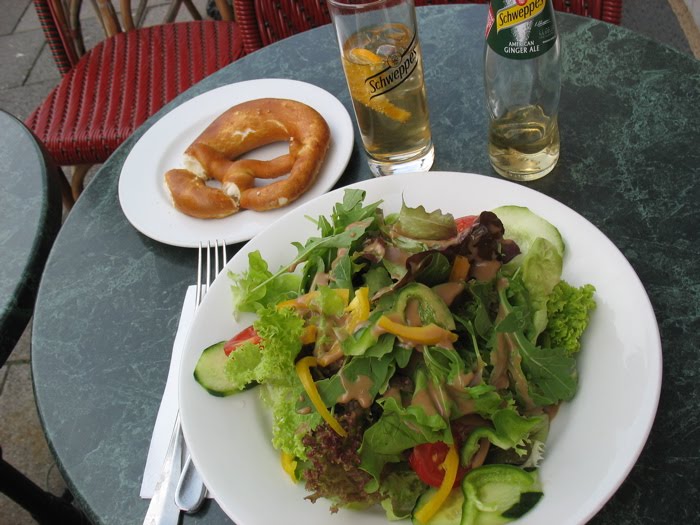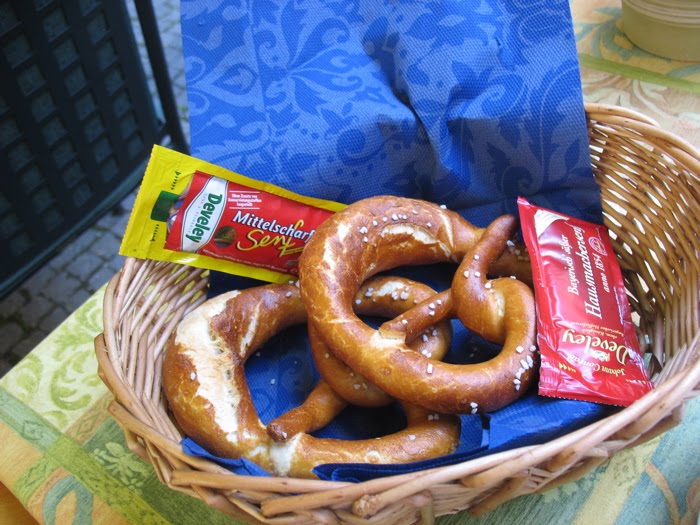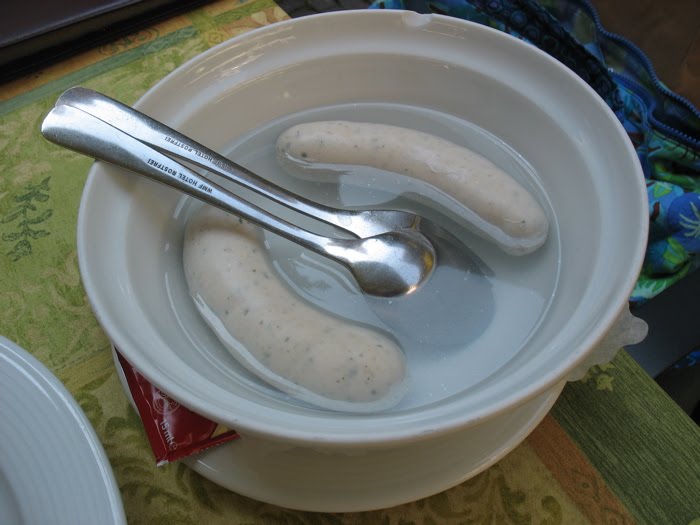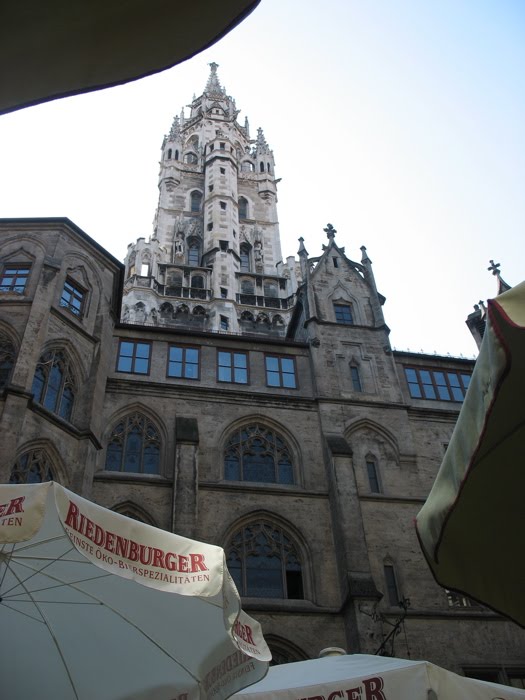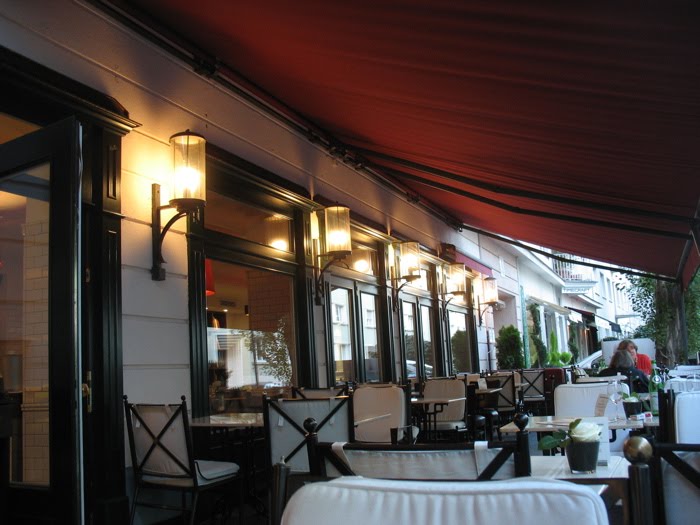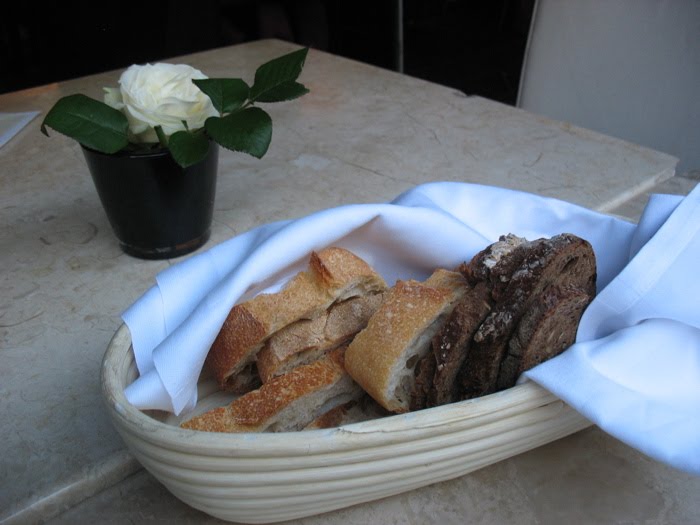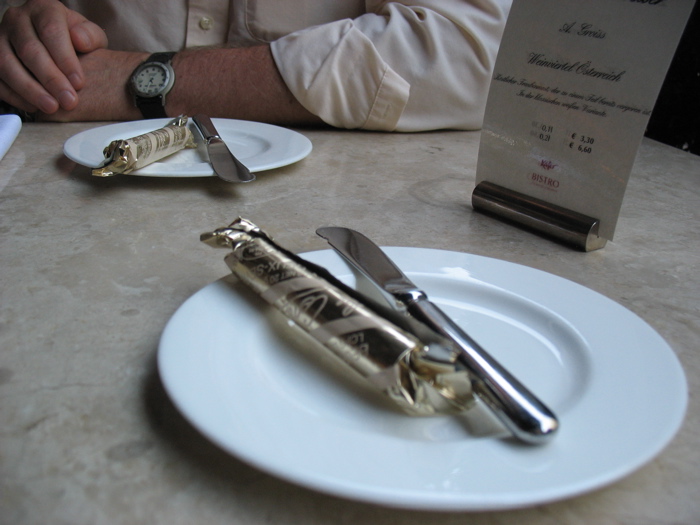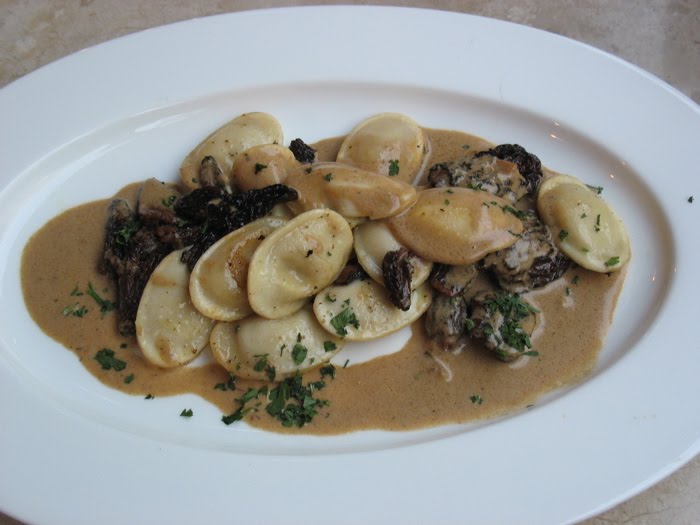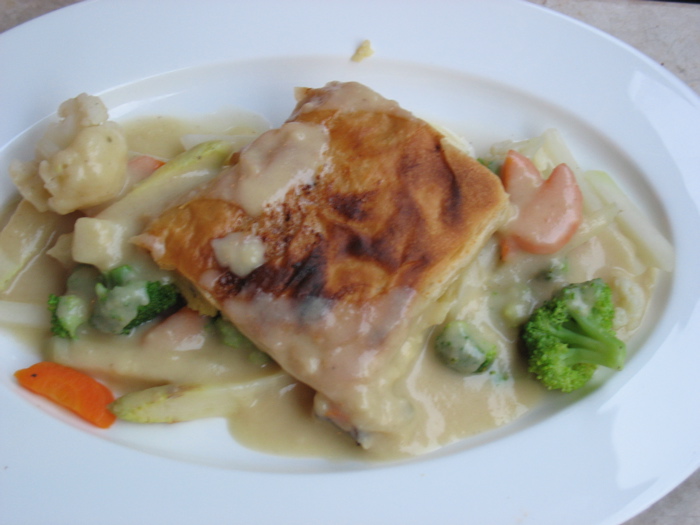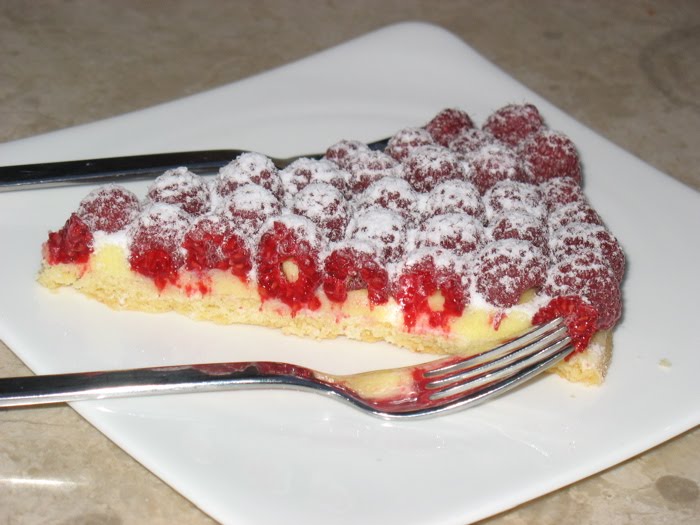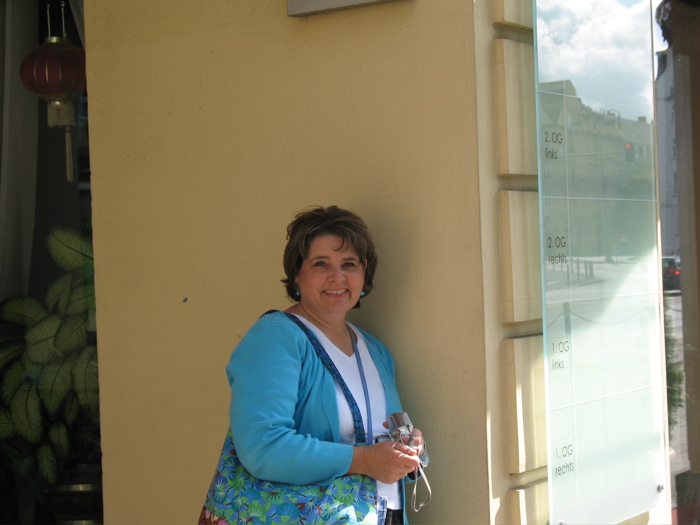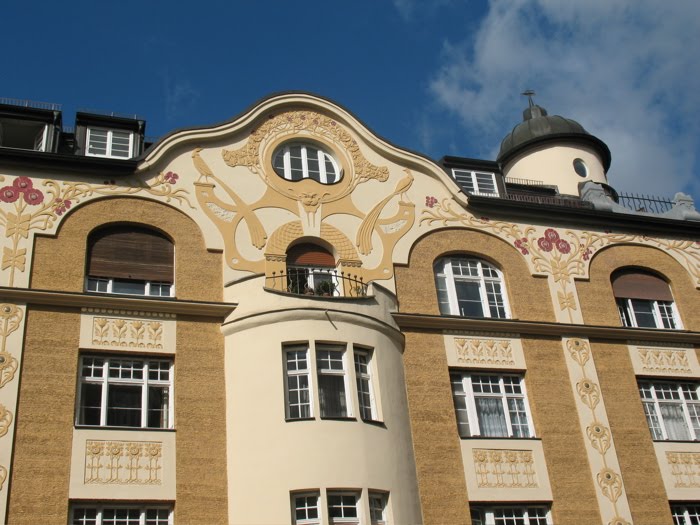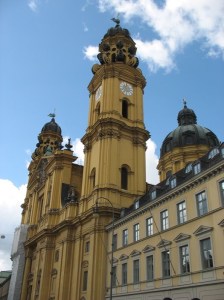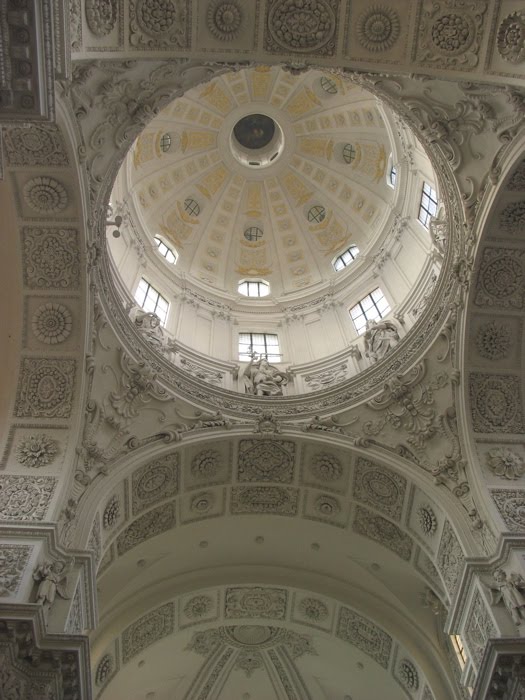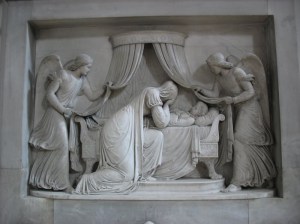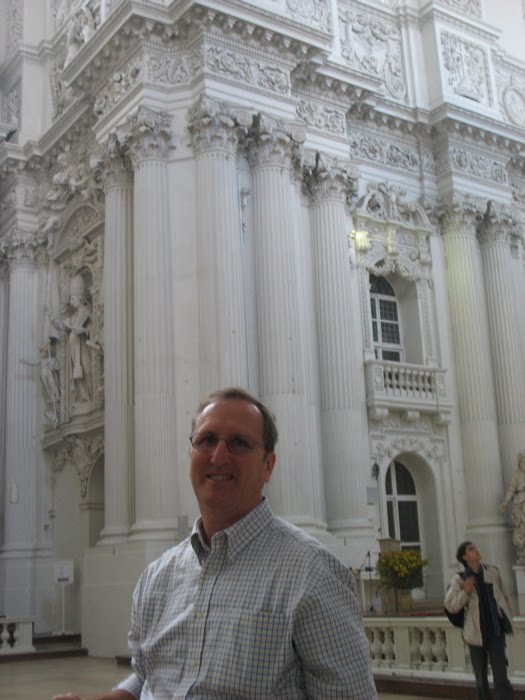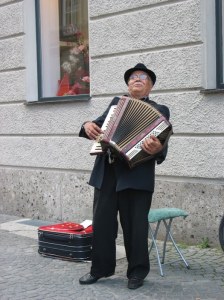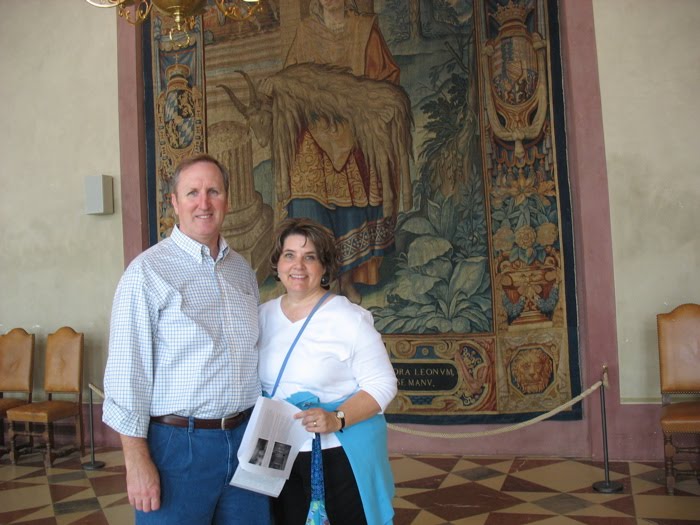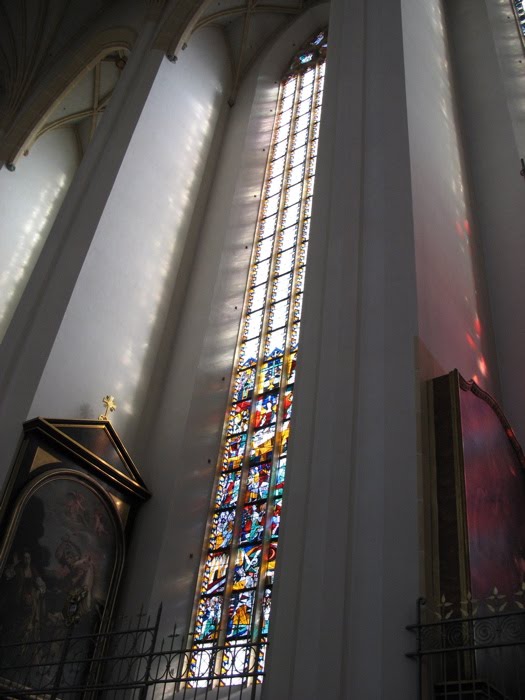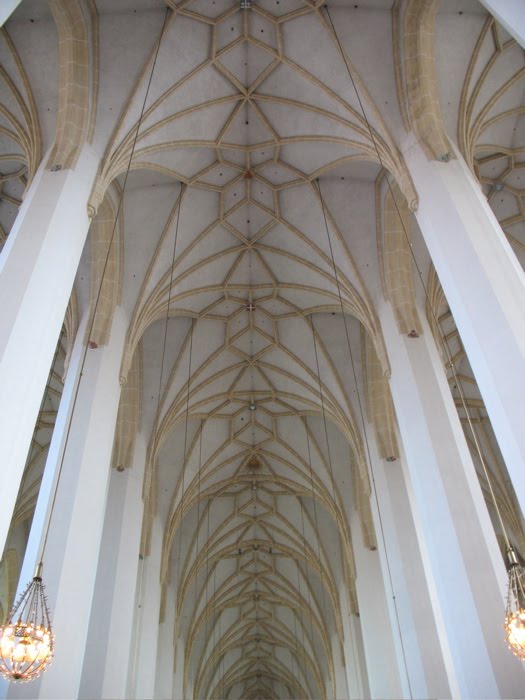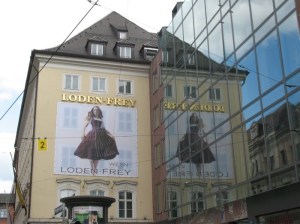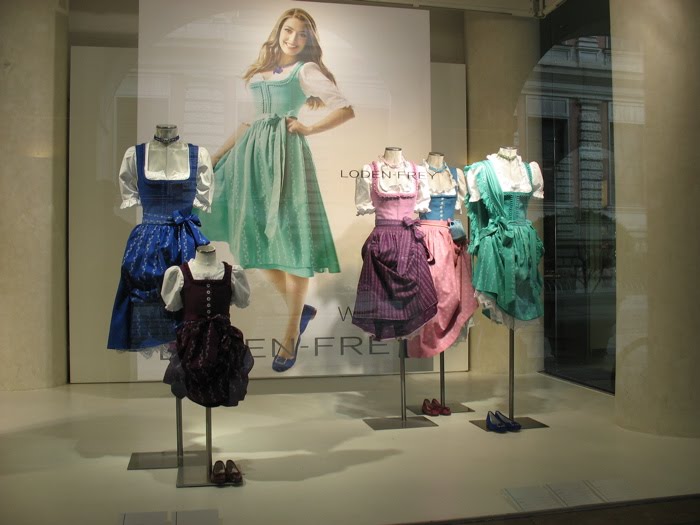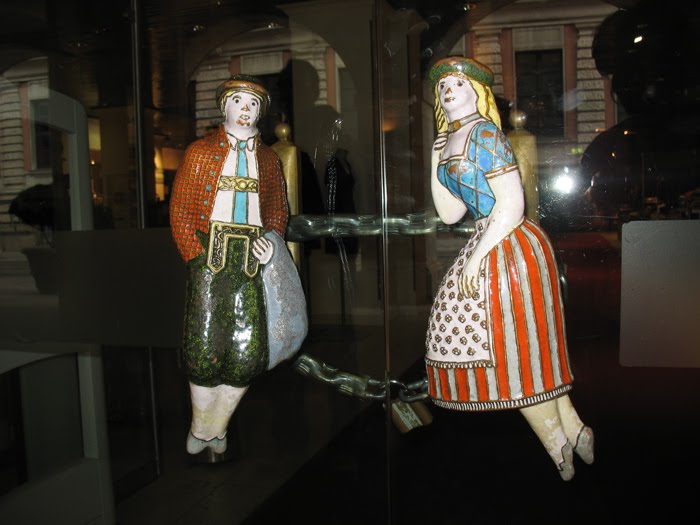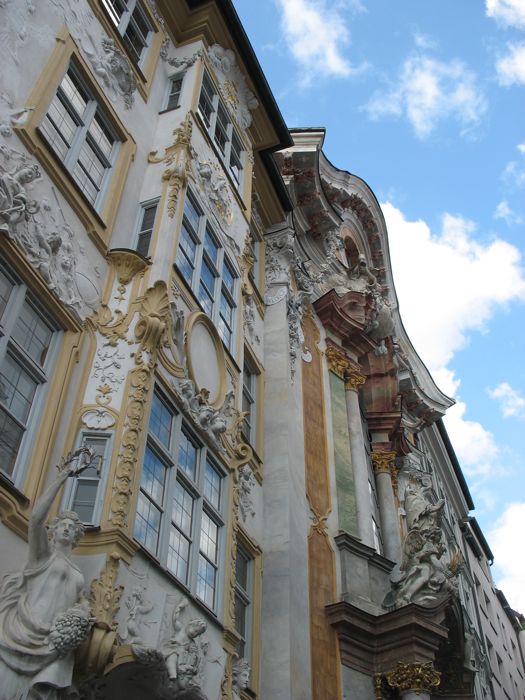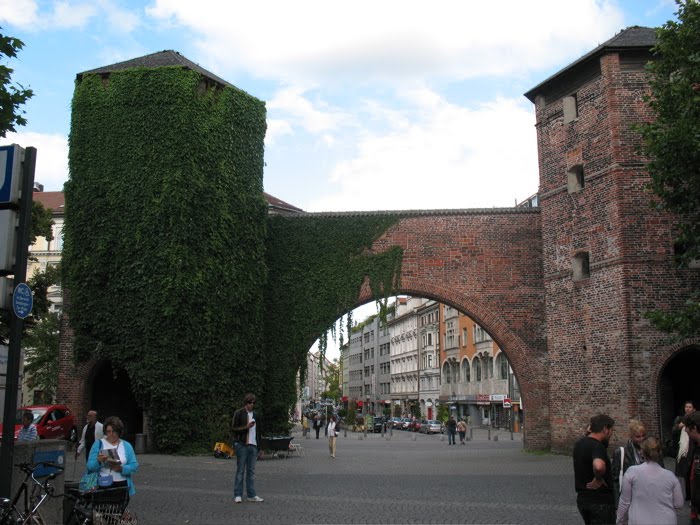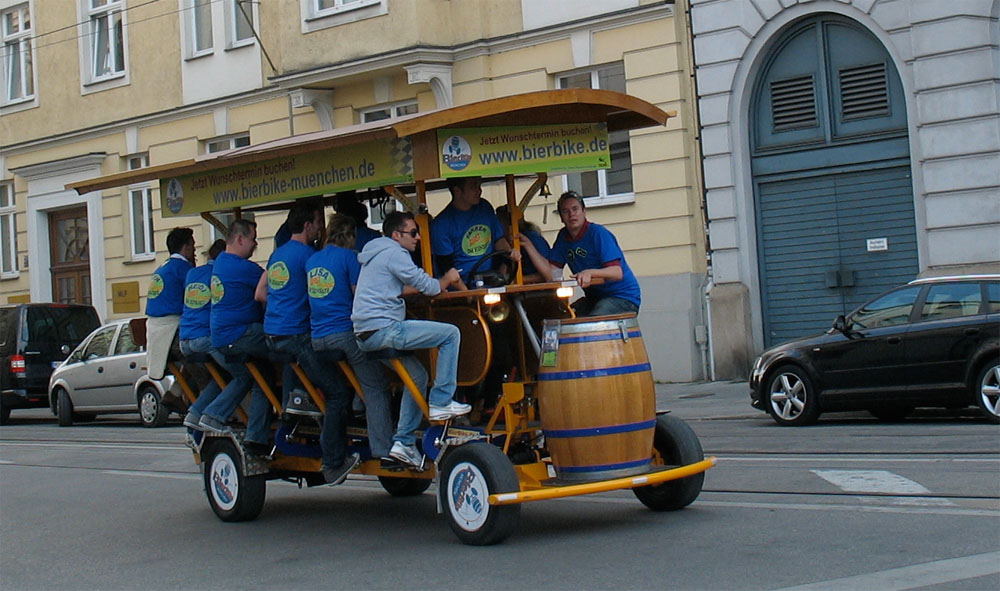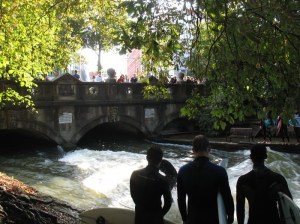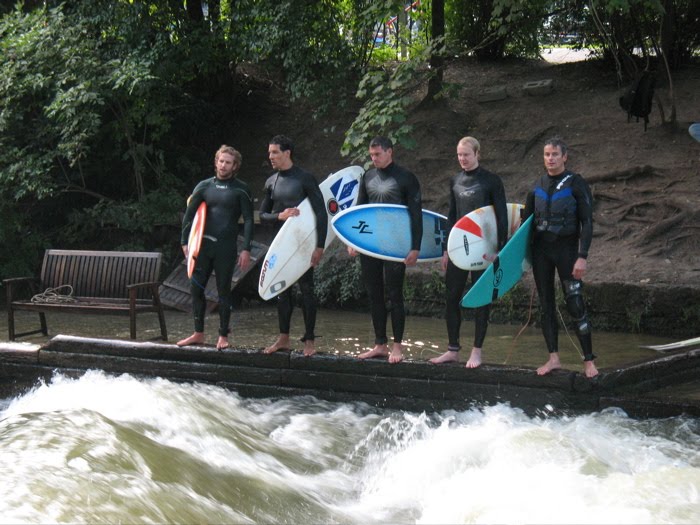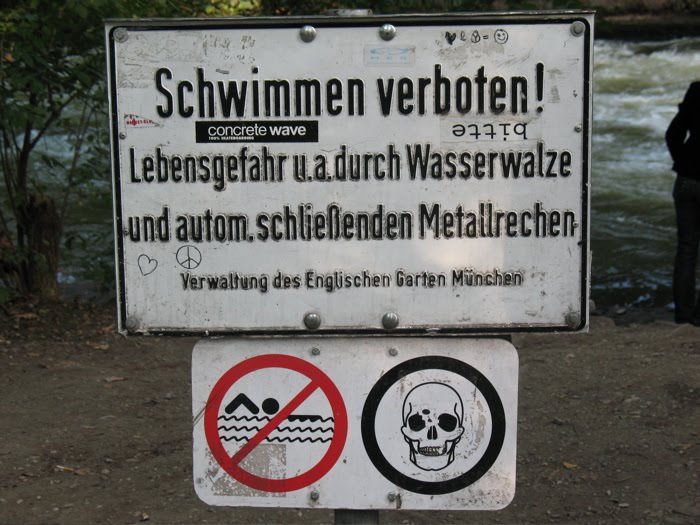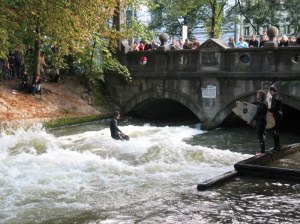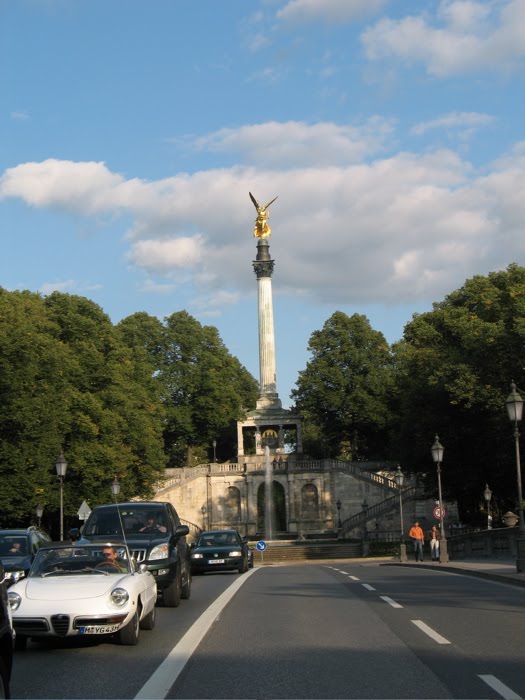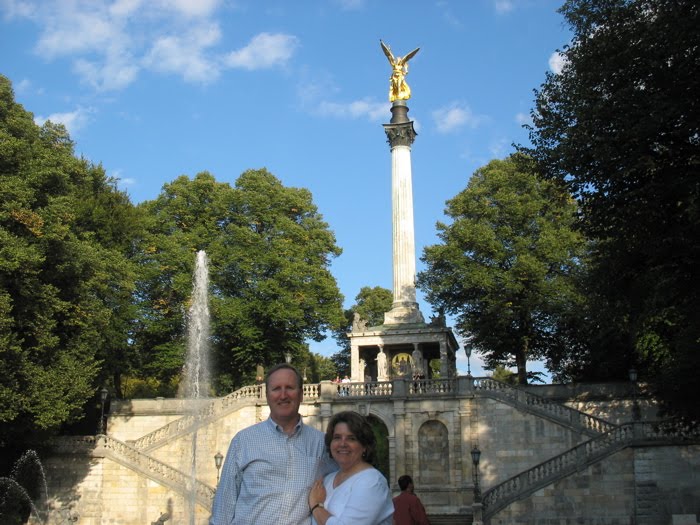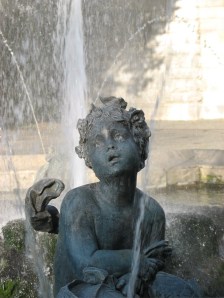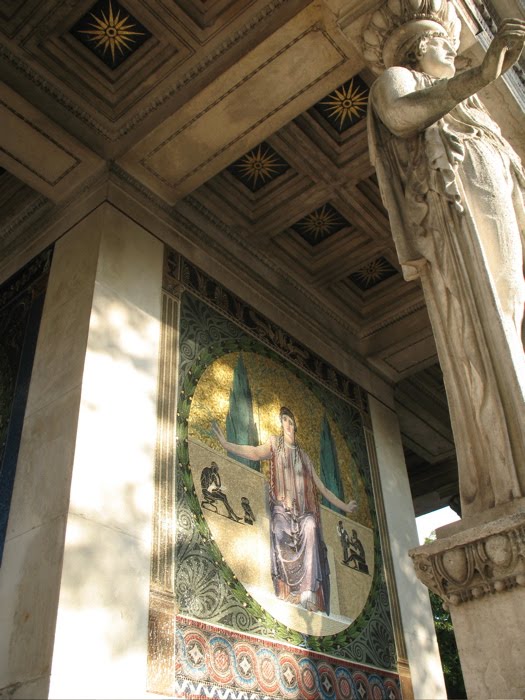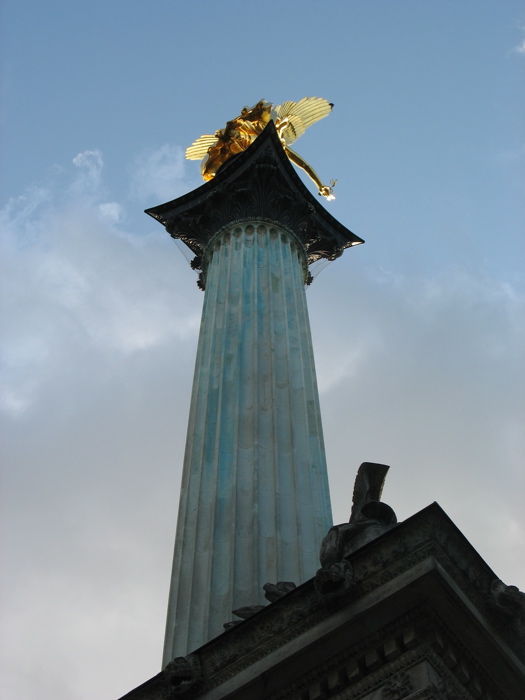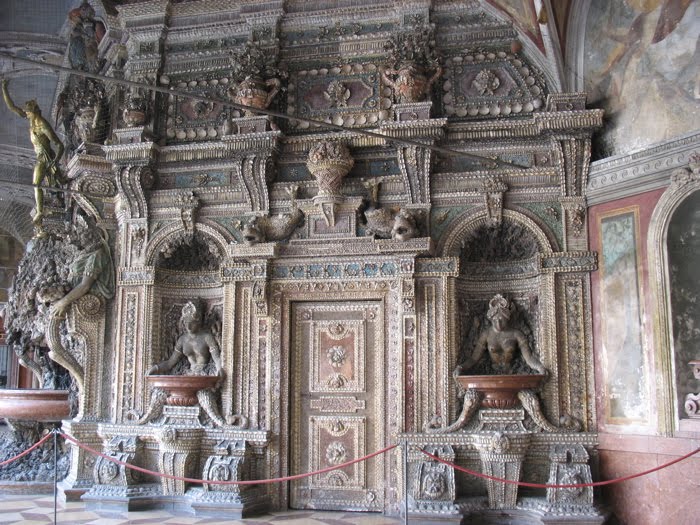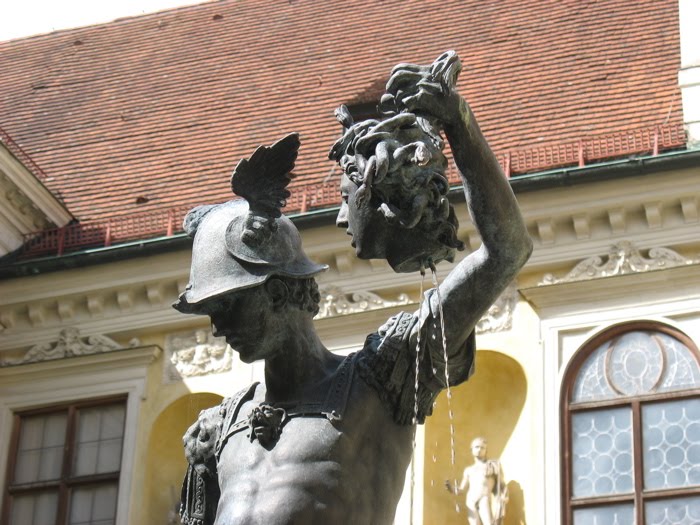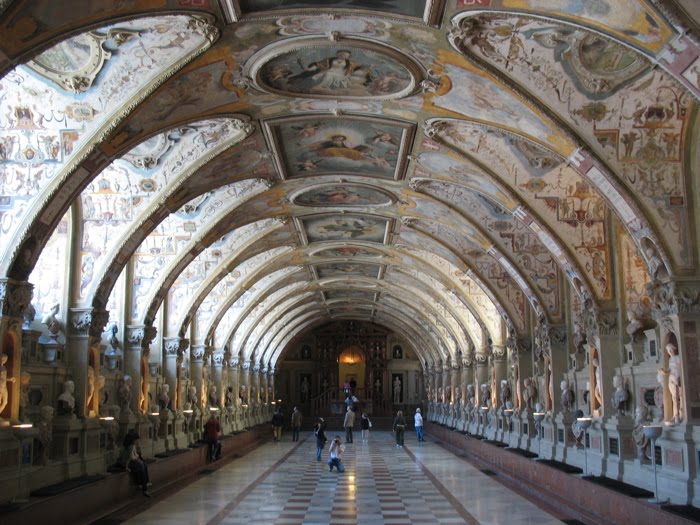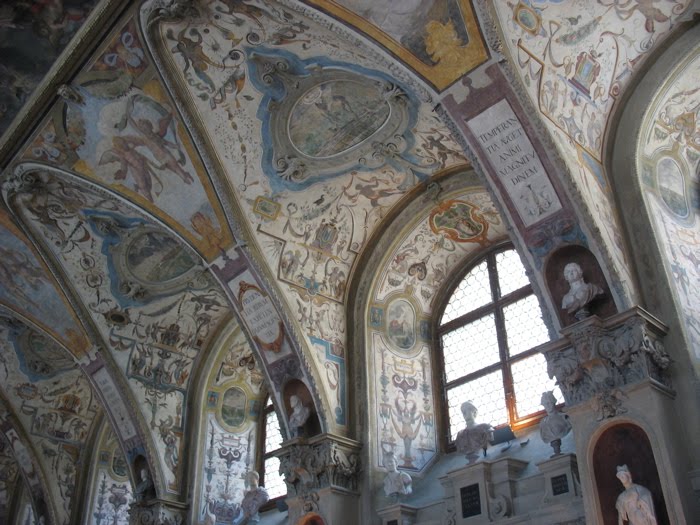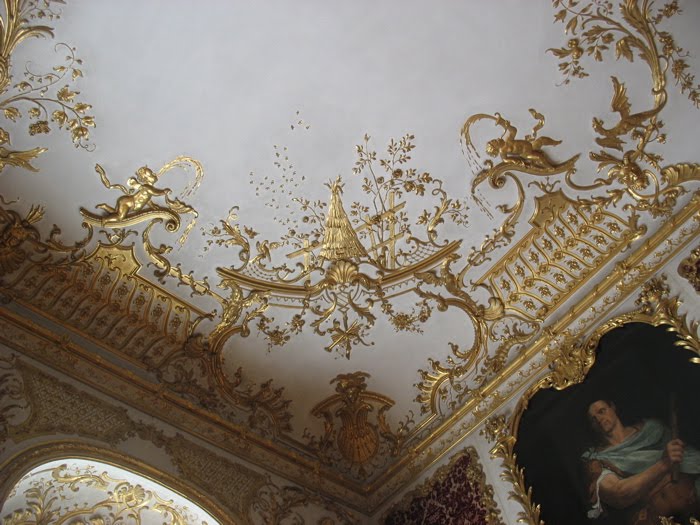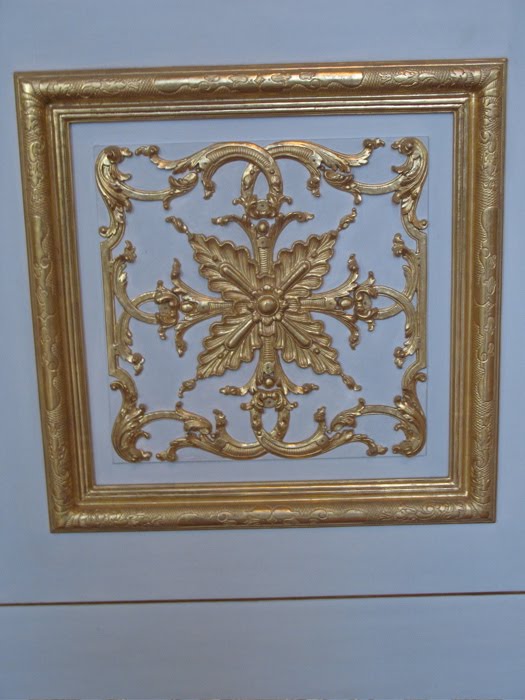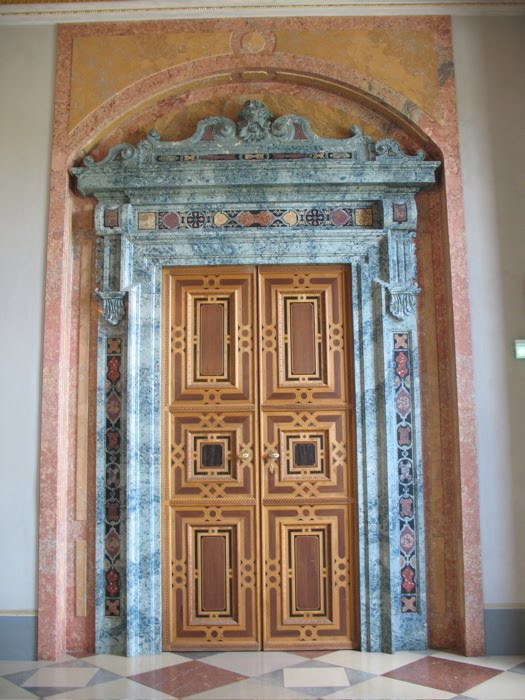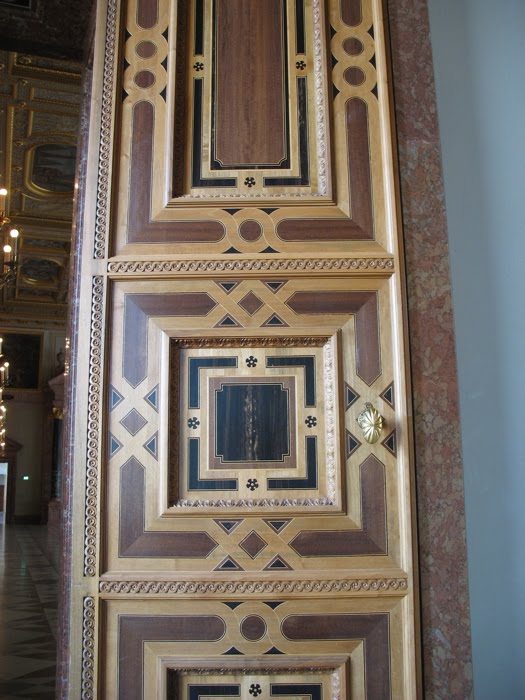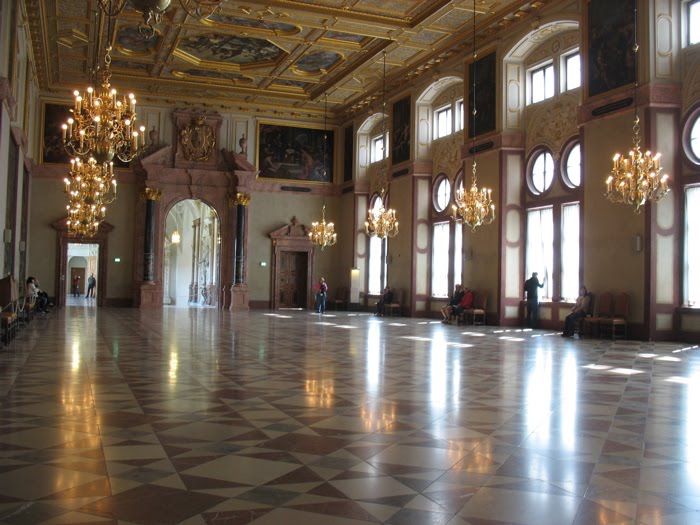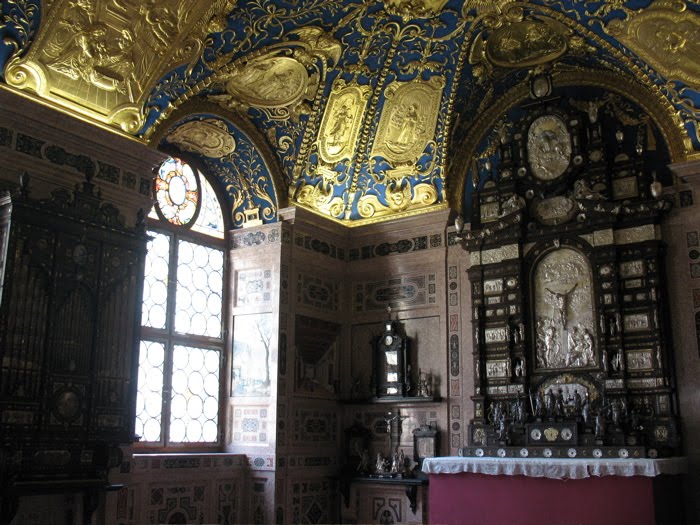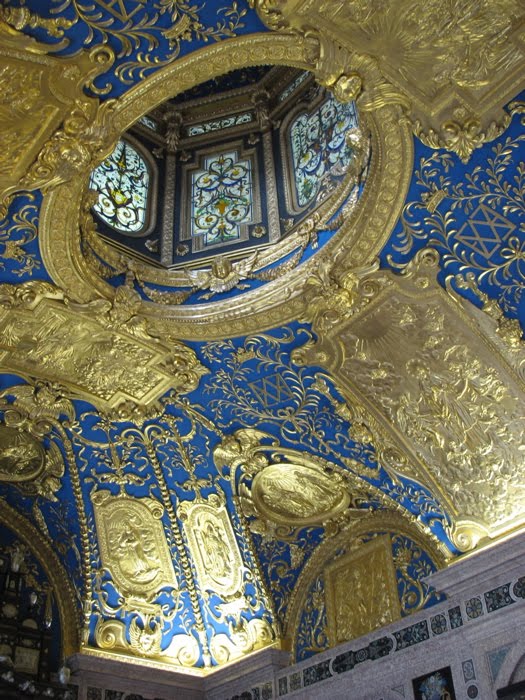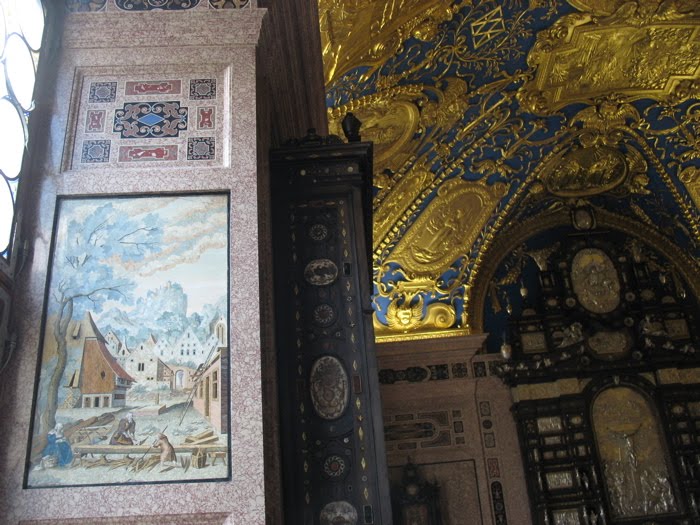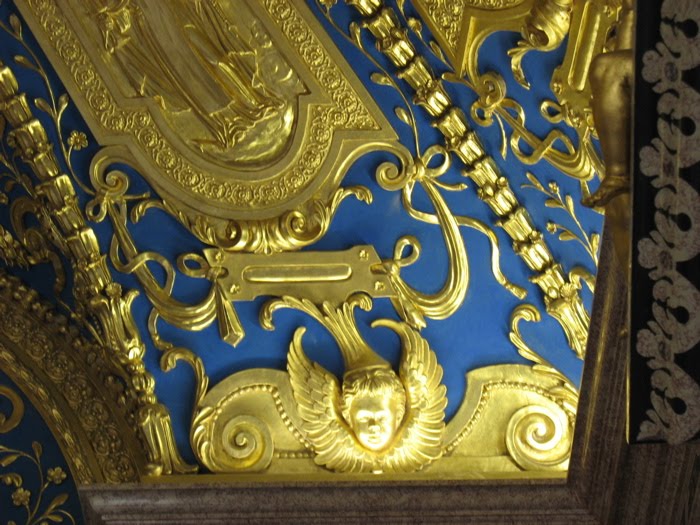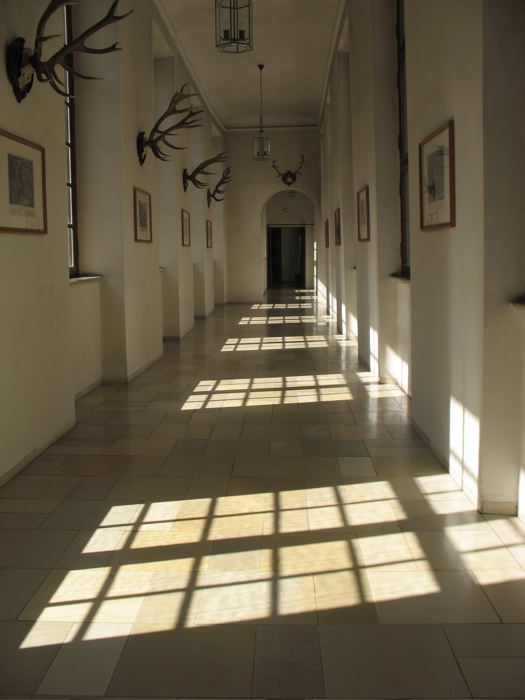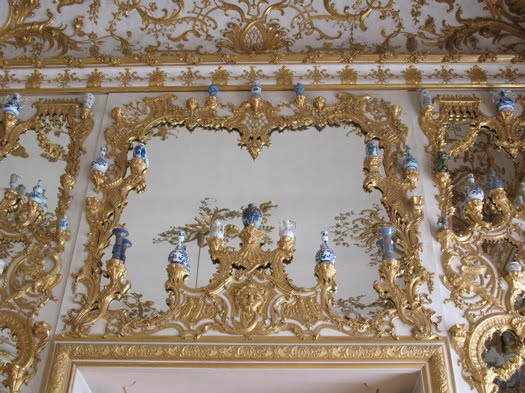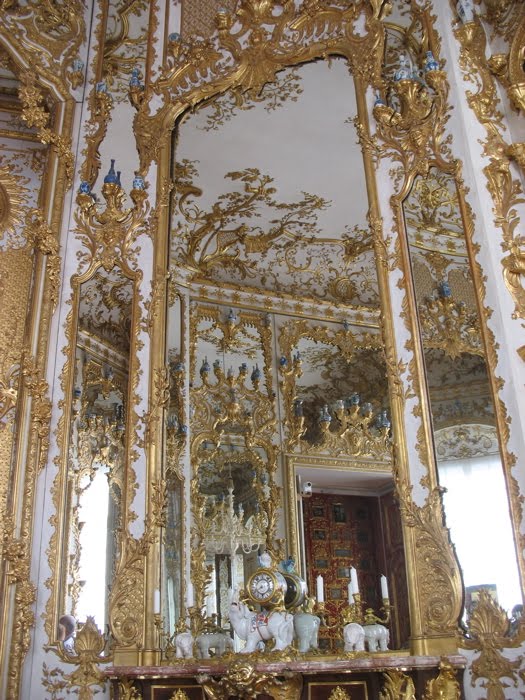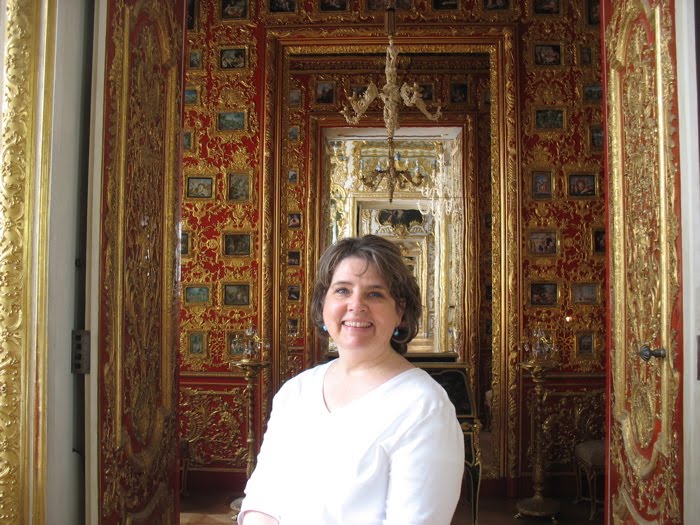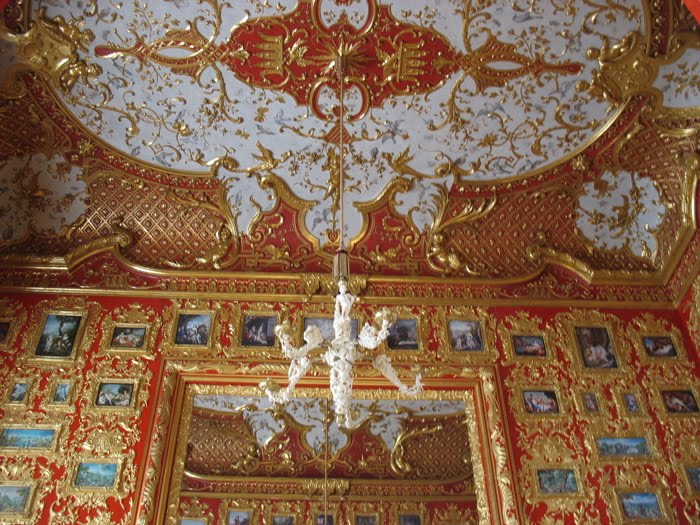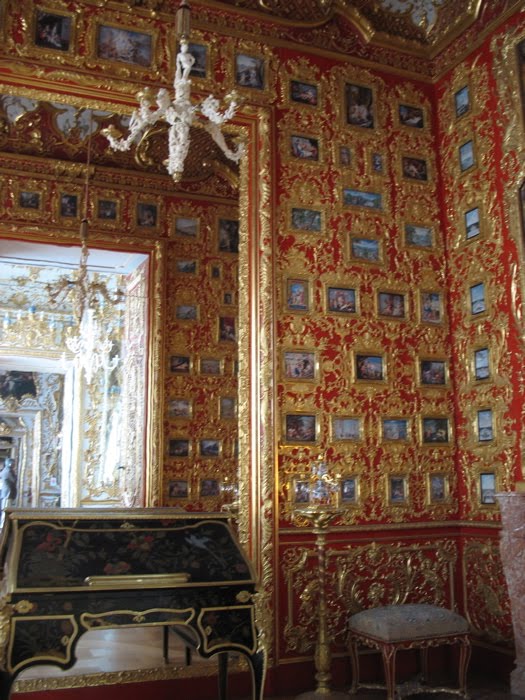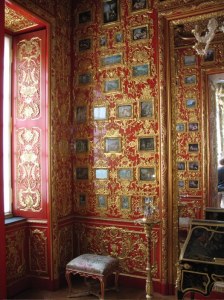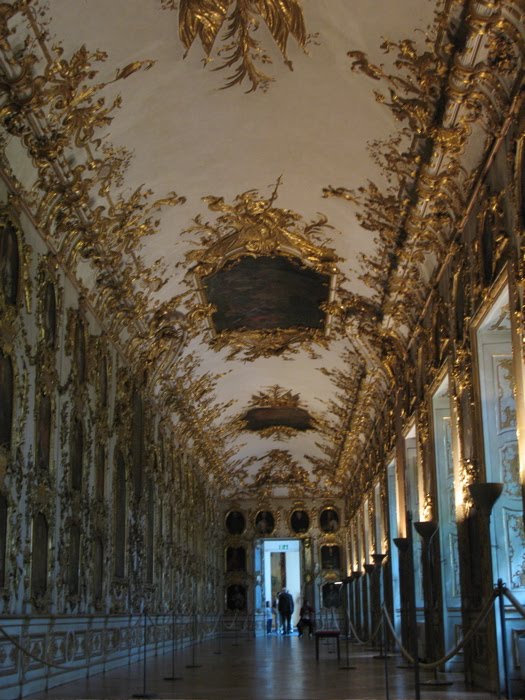Click on map to head to interactive Google Map.
Category Archives: Munich 2009
Strolling Around Munich
Travel Story: The couple in front of us, older than us by about twenty years we figure, seemed mighty uncomfortable on the plane. She got up and down and up and down and just as we pulled into the gate, bolted for the bathroom. Upon returning, as we all stood waiting to get off, she announced out loud, that all of us sitting around her may have noticed that she was sick but don’t worry that her illness was not contagious, just something that happened to her when she flew. Okey, dokey. A little too much information, I think.
But as we toddled out after them, all of our luggage in hand, it was apparent that they were ill-equipped for the journey up to the main airport and beyond and their wheelchair hadn’t arrived. They looked lost. I felt sorry for them, but really couldn’t do anything for them. Dave and I discussed this later and decided that they thought they were 50 years old, just like we think we’re 30 sometimes. A common problem. I decided we should start making age-related adjustments, and NOW.
Okay, maybe later, just as soon as we get back from Munich.
Just for the record, London Heathrow is a big airport with too many people and too many gates. However they have nice security people who still had one of our iPhones saved after we left it in security. That was a heart-stopping moment.
The weather is posted everyday on the wall.
Back on the U-Bahn and to Marienplatz, a central square that is ground zero for tourists. We joined them all on this fine Saturday afternoon, the weather a bit crisp, but sunny.
An older couple in typical Bavarian dress. We also noticed this group below, all decked out in their leiderhosen, and hats with feathers. We also loved the guy wearing socks with his sandals.
I asked a shopkeeper if this was typical, to wear them around their necks. Oh yes, she replied. But first we drink the beer. Then the cookies go around the necks.
So that’s the secret.
Munich’s Apple store.
I know, I should be noticing the BMW store, but that’s way out of town.
Okay, so we decide to try and get something to eat. We think it’s time to eat, it may actually BE time to eat, but the night is falling and we’re tired, so after looking at a few different restaurants, we stop here. The travel guru Rick Steves always says to watch out for places that bring you a menu in English. And Russian, Chinese, Italian and Spanish, but we’re too tired. So we get a cranky waiter who spoke perfect English even though he kept yelling at me that he didn’t (that was when I asked him what “Swabian noodles” were.) I suspect he had no clue either. Anyone? Sometime the translations are more trouble than they’re worth.
So I asked for the German menu again and they were spaetzle. So the above plate has roast pork with mushrooms. By this time we were still freaked out that we had to pay $5 for a small (about 8 oz.) bottle of water, so we just shared the Tourist Dinner (as we’ve come to call it) and sighed heavily when we remembered the manna we ate in Italy. (Really, this tasted much better than it looks. It’s hard to mess up roast pork around here. It’s practically their national dish.)
We couldn’t get out of there fast enough.
And it’s nice to be here in Munich.
Menu from Munich
We pick a corner table, put down our room key so they can track us, and head back to the buffet.
Weisswurst is a Bavarian specialty, usually served only for breakfast, for in the old days it was kept in a vat of hot water on the back of the stove and wasn’t any good past breakfast time. When we were here before, I tried to get one for lunch. Sorry, was all they said. I just can’t face this for breakfast.
—-LUNCH—
The first thing the waiters will do is ask you what you’d like to drink. I think Germans come in knowing their favorite ale and blurt it out. We are dumb tourists who ask to see their menu and then figure out the cheapest thing and go for that.
Last night I told Dave to just consider it our “tip,” that is to say, that we Americans are used to tacking on 15 to 20% on each bill, which they don’t do here (usually you round up to the nearest Euro, and in nice restaurants, add 3-4% or a bit more). Our drinks are the equivalent of that 15%. We’re trying to wrap our heads around this. Really.
We also saw large cones everywhere. Think ice cream cone, but made of cardboard wrapped with colorful paper and LARGE, like 18″ tall. I finally asked, and was told they were for the schoolchildren and were filled with candies and small toys for the first day of school. School begins here September 14th, so they are for sale everywhere.
HofbrauKeller is also one of the top ten Beer Gardens of Munich, with a huge area for table under a canopy of spreading chestnuts. We didn’t see it (I’m quoting from the guidebook) but apparently they also have a children’s playground. I guess it’s so the children can guide the parents home afterwards, but Dave tells me his friend Dietmar could quaff five of those very tall glasses of beer and still function.
On our honeymoon, we were in a Bavarian eatery and had each ordered their version of the prix fixe meal: salad, entree and dessert. True to habit, Dave finished first (he was the last in a line-up of six children so learned to eat quickly). Being a new bride, I offered to give him a bite of my dessert.
He left me a bite.
So after that we get out a fork and split it. Right down the middle.
The waiter told me it would take 25 minutes for the weissewurst to be ready. I was happy about that because then I could sit and do my journal and write my postcard and not be bothered. When it finally arrived, it looked like this:
Surprise! It was very good. It had flecks of herbs throughout so it was a very mild flavor. The texture was even more velvety than the breakfast sausage served at our hotel–this was almost like a firm puree and very appealing. The next bites I took were more normal, and coupled with the pretzel, a fine lunch. I still can’t wrap my head around eating them for breakfast, though.
Dave had heard about the restaurant Kafer from a foodie friend of his, and that it was VERRRY pricey, but amazing food. The view above is not that restaurant, but instead is the bistro downstairs, at a fraction of the cost. They close precisely at 8 p.m. (this IS Germany, after all) so as not to interfere with the dinner business of the restaurant. Dave got home from his conference, did some emails at we arrived here (after a short walk from our hotel) at 7 p.m. It took a while for them to translate the menu for us (very nice people) but we were all seated and ordered by 7:10 p.m.
Kafer’s main business downstairs is an upscale grocery store: think specialty foods. Like roses crusted with sugar crystals for decoration. Like candy-coated dark chocolate dragees that are the size of your thumbnail in 15 different colors, including “stone.” Like a full menu of prepared foods, and a fruit stand and a vegetable area, fish, wine, “flesh” and bread areas, not to mention the gift shop and linens area one half-level up. A foodie’s heaven, a smaller twin to the famous Dallmayr shop near Marienplatz. (I went there too, more on that later.)
Bread, not charged by the piece.
The butter was placed on our plate by the server, a small round tube wrapped in foil.
I had duck liver ravioli, served with morel mushrooms. An earthy, but delicious, taste.
Dave’s was a vegetable strudel with a white creamy sauce, atop a bed of steamed vegetables: turnip sticks, white asparagus, broccoli and cauliflower. Light and refreshing (we shared bites of both entrees).
Dessert was a raspberry tart. Instead of a pastry crust, which I find sometime to be tough, this had a shortbread crust with a light filling, and raspberries that they’d just picked from their vines out back. . . or so it tasted. We split this, too.
And how does a tourist get through a long day of hiking around?
Chocolate! In all different flavors!
Remembrance of Things Past
Mass was being said, so we entered quietly and took a seat in the back, pulled in by the live choir singing to a full-throated organ. The rest of the mass, when there wasn’t the choral music that I love, was time for reflection on my family–after all, it was the Sabbath. I thought about Barbara, with her heart disease, and was saddened for her. I think the sadness came from the somber tones of the mass, and certainly wasn’t helped along by the scene below, taken later that day. One of the princesses of the Wittelsbach realm had lost her daughter and this was a memorial to that event.
It was interesting to get that five-year perspective, and as I sat in this soaring church, immersed in the strict choral harmonies of some ordered German composer, I thought of how Heavenly Father must view us with his perspective and wonder how often we miss the boat about what’s most important in life. Maybe, as illustrated by the memorial above, it is in relationships, keeping them going, figuring them out, loving more completely, repenting where necessary and most importantly–learning to forgive. For as I’ve gotten older, I think the whole grand plan and design rests on Christ’s shoulders and his twin gifts to us: repentence and forgiveness.
Music man, outside the church.
We headed to the Residenz next, Munich’s great royal house. We had wanted to go back there every since that fateful day when, as Dave so delicately put it, we had a computer malfunction and lost the photos of the previous trip. (For the record, I was the computer malfunction; still learning a new program, I erased the photos.) It was interesting to stroll around the Residenz, remembering places and sights we’d seen and enjoyed, but really hadn’t remembered because of the lost photos. “Oh, I remember this,” one of us would say, and the other would nod in agreement. Or we’d remember what was next in the tour. We decided not to get the audiophones as we’d done that before and forgotten it anyway. Such an interesting thing, this memory. Like the sea washing the beach clean every day, and our photos are the collected and saved seashells in the glass jar at home.
Look for a separate post on the Residenz at a later day.
While get off at the next stop and while we wait to cross, we see the BierBus, or Beer Bus.
Have keg, will travel, as long as the people sitting down peddle hard–it’s the means of locomotion.
Yep, the surfers. This stream comes out from underneath the bridge at a good clip, hitting some sort of pipe, which creates a moving wave.
Just a friendly reminder.
The surfer would jump in, take a few passes back and forth, then dive into the froth behind them, giving the next person a chance. It was fascinating to watch and I’ll post video later. Dave later commented that it was a very efficient way to surf.
We kept walking. Dave stood in the middle of the street to get this one. No wonder they call us crazy tourists (don’t worry, I kept watch).
The Residenz
The Residenz was the Royal Family’s residence, the place where they hung out for hundreds of years until the Allies (that was us–sad faces, please) bombed it to smithereens in a few hours one day, in order to Do What We Had To Do. The German pamphlets are very nice about this fact, and never mention the complete loss of this amazing palace. Truthfully, the stats are that 23,000 square meters of roof was reduced to 50. Much of the artwork and many of the treasures had been moved to a safe location
But don’t worry. The Nazis, in all their tidiness, photographed this place ad nauseam, so with the fragments of this palace that were left, the archived artwork and treasures, all those photographs (and I’m sure some war reparations money), they rebuilt the thing. Dave and I both agree it’s one of the most impressive royal houses we’ve seen, perhaps because it’s a highly edited collection.
We call this the Dripping Medusa statue. What you can’t see is that the rest of Medusa’s body is at this guy’s feet and water is squirting out of her neck, too. Very inventive.
Because this is a blog post, I’m going to give you the edited verion, the highlights according to Elizabeth. One is the ceiling corner of the next room (below). I have three more corners, but won’t post them, because you get the idea from just this one.
The door to the Four Horses Salon and adjoining Kaisersaal (Emperor’s Hall). Last time we were in Munich, our conference had a reception here in the Residenz with the Deputy Secretary (equivalent to our Secretary of State). The conference organizers put in to the Secretary’s office for a reception and that office chooses the place and provides the food and hor d’ouvres on their budget. We lucked out and were here.
Looking up into the cupola. We were prevented from entering by a velvet rope, so the angle is skewed (the stone floors are original and they’re trying to protect them).
Stone on the left, a glimpse of ceiling, then the altar.
This is the Green room section, repete with mirrors. Apparently having a plate glass mirror was a real sign of wealth in the 17 and 1800s and this room (and some of the next) showed that off. This fireplace is at the end of a cross-shaped arrangement of rooms, and while the photograph doesn’t really show this, it reflects back two galleries just like it.
We were happy to have the chance to come here again, and went out into the day, heading over to the Yellow Church (look later for a post).
